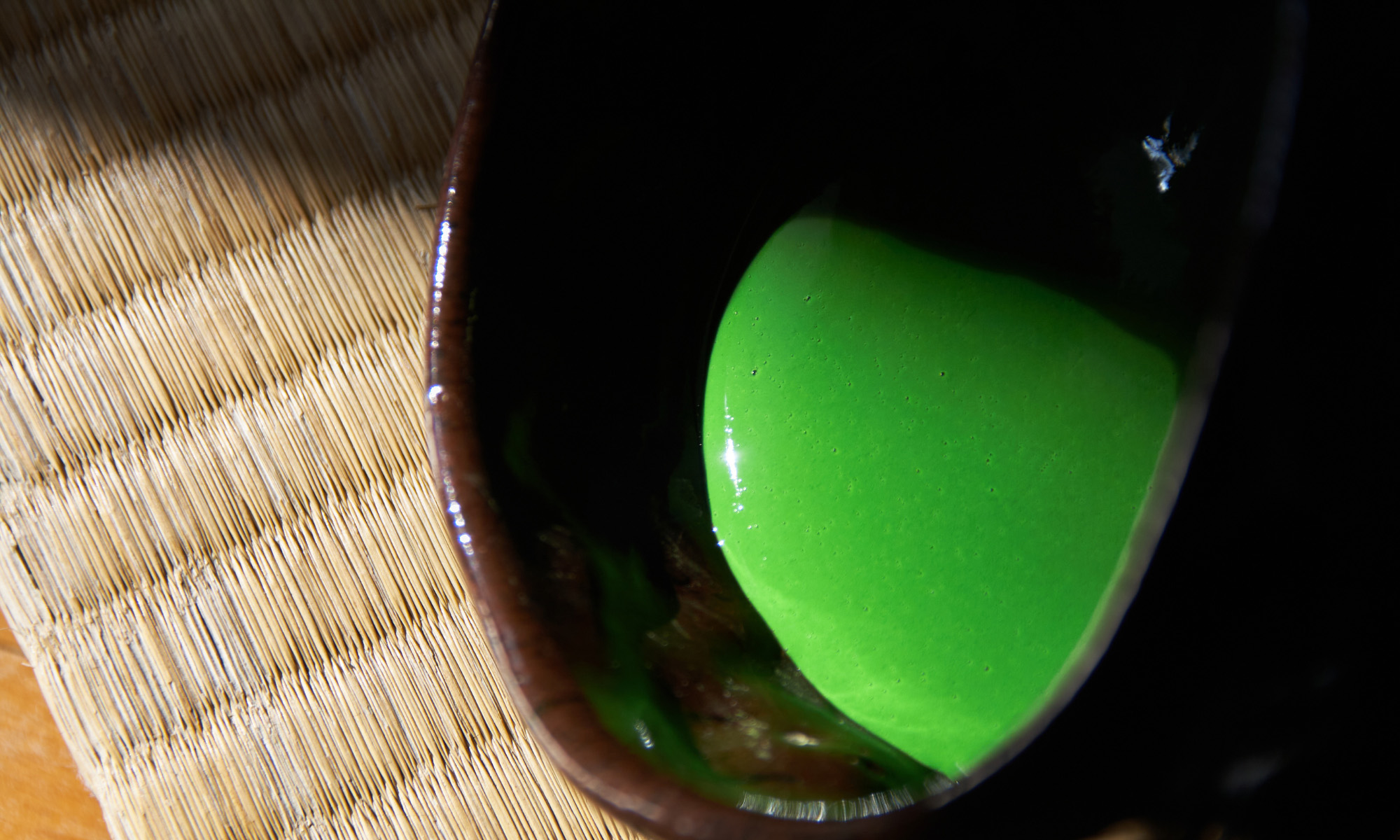From growing to production of Tencha
- In the middle of April, the tea bushes are covered with a „reed screen“ to shut out the sunlight.
- After about ten days, straw is spread out on top of the reeds to shut out even more light little by little. As a result, the young leaves grow very thin and wide to capture the little sunlight that is let in by the cover and in the process they become bright green with an increased amount of chlorophyll. This method controls the astringency of taste and improves the distinctive flavor of the tea as well as giving it a more full-bodied character.
- The picking of the leaves takes place from early May to the middle of the month. The first flush tea leaves are all picked by hand because they are soft, and at only this one time in a year.
- Immediately after picking, the fresh tea leaves are brought to the tea processing facility.
- Soon after, the leaves are steamed very strongly to stop fermentation. Thus the vivid green colour is retained throughout the whole leaves.
- After the moisture on the steamed leaves has been blown away by whirling the leaves around, the leaves are cooled down and dispersed equally.
- In a brick built oven called ‘Hoiro’, the leaves are put on a triple conveyor to dry out all moisture.
- The dried leaves of unsorted tea are called Tencha. In this fresh dried condition the leaves are stored in large sealed wooden boxes which are kept refrigerated until further processing. Little by little, as required, the boxes are brought out of refrigeration and opened for the next processing step.
The processing of Tencha to Matcha
Cutting –> Wind blown sorting –> Sifting –> DryingElectrostatic cleansing –> Blending –> Stone grinding –> Perfection
- The raw dried Tencha leaves are cut into a uniform size.
- Most of the stalks and veins are removed by fanning.
- The remains are sifted and cut to even length and then dried again to increase the aroma peculiar to Tencha.
- An electrostatic process removes leftover parts of older leaves, stalks and veins.
- The quality and distinctive features of each tea are discerned from the appearance, flavour, aroma, and colour of the processed leaves.
- In order to make consistent and well-balanced products, different kinds of Tencha are blended according to their properties to maintain the quality and character of any named tea. The appropriately blended Tencha is then ready for grinding.
- The Tencha leaves are thoroughly ground by stone mills into a fine powder. Only the best stone mills can grind green tea leaves into the micron fineness necessary to bring out the refined fragrance and flavour.
Quelle: Marukyu-Koyamaen, Japan
